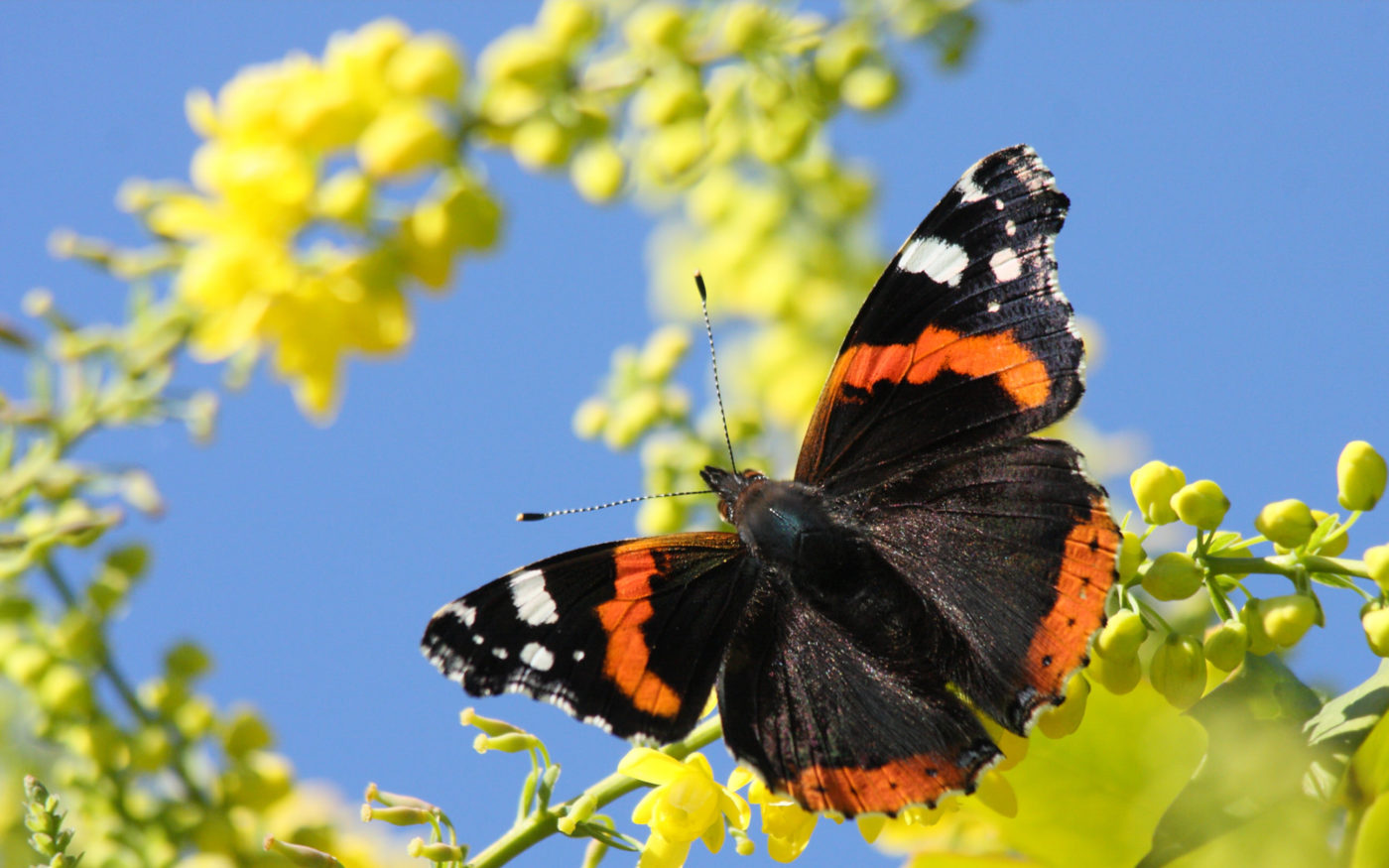Order
Butterflies and moths
The wings of butterflies and moths are covered with many tiny scales, which are pigmented or iridescent, creating attractive and distinctive patterns of colour that make the larger species so recognisable and popular.
What do they look like?
One such familiar and vividly marked species is the Red Admiral, one of the largest and most magnificent butterflies in Britain.
The Red Admiral is a powerful flyer, with expansive wings (wingspan 45-60 mm) and a cylindrical body. Its bold coloration makes it easily recognizable, whether settled or in flight: no other British butterfly has a similar distinctive combination of black, white and red. The upper surface of the wings is velvety black (or very dark brown) with a bright red stripe across each forewing, a bright red border to the hind wings, and small but striking white patches on the outer front corners of the forewings. The sexes look very similar but the male is smaller than the female.
Where do they live?
The Red Admiral butterfly can be seen in almost any habitat from seashores to town centres and from valleys to mountaintops. It is one of the most familiar garden butterflies, and is commonest around woods, orchards, hedgerows and parklands where there are places to shelter as well as an abundance of flowers, nettles and rotting fruit.
Where can they be found?
It can be found anywhere in Britain and Ireland.
When can you see them?
The Red Admiral regularly migrates to Britain from North Africa and continental Europe from spring through summer. The immigrant females lay eggs from which fresh adults later emerge from July onwards. The butterflies are regular visitors to gardens from March to October or November, although individuals are seen in other months.
Life cycle
Eggs are laid singly on the upperside of leaves of young stinging nettles – or, occasionally, on related plants such as small nettle and on hops – and take about a week to hatch.
The caterpillar feeds on the leaves and lives in a tent that it makes by spinning them together with its silk. These shelters can be found in July and early September. The caterpillar feeds for about three weeks and then forms a chrysalis suspended from the roof of the leaf tent. The adult butterfly subsequently emerges from this chrysalis.
What do they do?
Though it is mainly a migrant visitor to the UK, there is increasing evidence that the Red Admiral is surviving our warmer winters, both by adult hibernation and as eggs or caterpillars, in southern areas. However, it is a mystery why so few Red Admirals survive winters in the British Isles, as they seem to overwinter in parts of central Europe that are much colder than Britain.
The Red Admiral is not a threatened species but, since nettles are unpopular, the continual spraying and removal of these food plants may cause long-term reduction in its populations.
Did you know?
There are about 2500 species of butterflies and moths in Britain, but less than 2.5% of these are butterflies.

